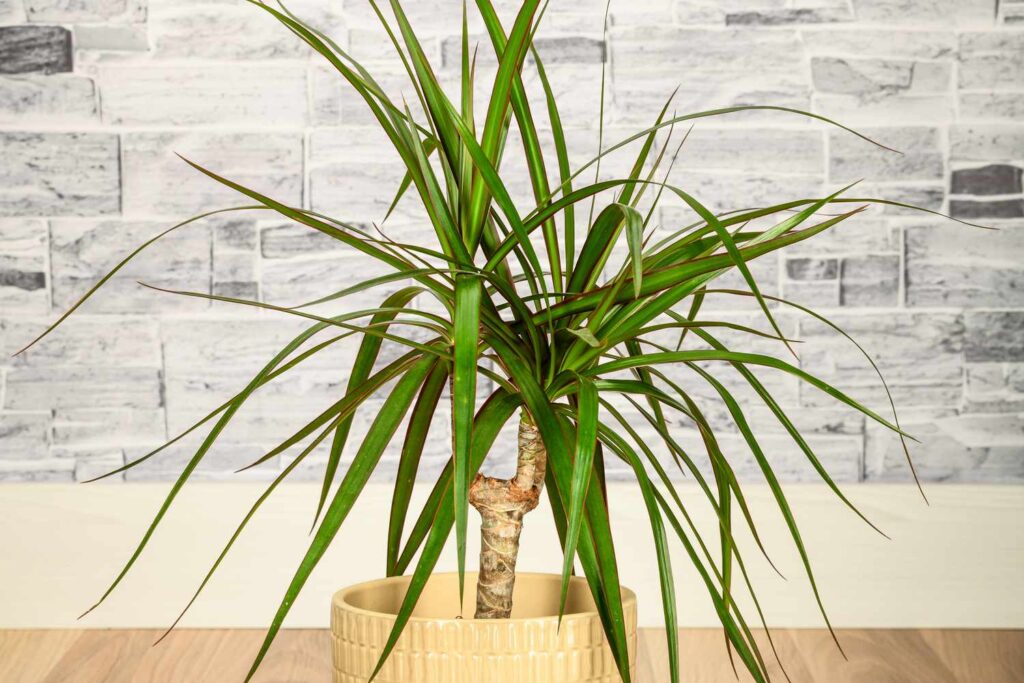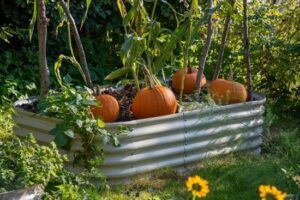House Plant That Looks Like a Palm Tree

I. Introduction
The Majesty Palm, with its gracefully arching fronds and slender trunk, evokes the lush ambiance of tropical paradises. Its vibrant green foliage, arranged in a symmetrical crown, adds a touch of regal splendor to any room. Majesty Palms can reach impressive heights when grown indoors, making them ideal statement pieces for spacious living areas or entryways.
B. Care Requirements and Maintenance Tips:
To keep Majesty Palms thriving indoors, it’s essential to provide them with bright, indirect sunlight and consistently moist soil. These plants prefer humid environments, so regular misting or placing them near a humidifier can help maintain optimal growing conditions. Avoid overwatering, as this can lead to root rot, and be sure to trim any brown or yellowing fronds to encourage new growth.
C. Creative Ways to Incorporate Majesty Palm:
Majesty Palms make stunning focal points when placed in decorative pots or planters and can be complemented with smaller houseplants or decorative accents to create a tropical oasis indoors. Consider placing them in corners or near windows to maximize their exposure to natural light and showcase their beauty. Additionally, Majesty Palms can be used to divide larger spaces or add height to room designs.
II. Parlor Palm (Chamaedorea elegans)
A. Characteristics of Parlor Palm Foliage and Trunk:
The Parlor Palm, also known as the Neanthe Bella Palm, features delicate, fern-like fronds that emerge from a slender, bamboo-like trunk. Its compact size and graceful appearance make it a popular choice for smaller living spaces or tabletop displays. Parlor Palms are prized for their resilience and adaptability, thriving in low-light conditions and maintaining their vibrant green color throughout the year.
B. Suitable Growing Conditions and Watering Needs:
Parlor Palms prefer indirect sunlight or partial shade and well-draining soil that remains consistently moist but not waterlogged. Watering frequency may vary depending on environmental factors such as temperature and humidity levels, so it’s essential to monitor soil moisture regularly. Avoid placing Parlor Palms in drafty areas or near heating vents, as this can cause stress and damage to the plant.
C. Placement Ideas for Showcasing Parlor Palm:
Parlor Palms add a touch of elegance to any room and can be displayed in decorative pots or baskets to enhance their visual appeal. Consider placing them on side tables, countertops, or shelves to brighten up dull corners and create a cozy atmosphere. Grouping multiple Parlor Palms together can also create a striking focal point and add depth to interior design schemes.
III.Areca Palm (Dypsis lutescens)
A. Unique Features of Areca Palm Fronds:
The Areca Palm, also known as the Butterfly Palm or Golden Cane Palm, is prized for its feathery, arching fronds that cascade gracefully from the top of slender, bamboo-like stems. Its vibrant green foliage adds a touch of tropical elegance to any space, making it a popular choice for interior decor. Areca Palms are relatively low-maintenance and can thrive in a variety of indoor environments.
B. Guidelines for Caring for Areca Palm as a Houseplant:
Areca Palms prefer bright, indirect sunlight and well-draining soil that remains evenly moist but not waterlogged. Regular watering is essential, especially during the growing season, to prevent the soil from drying out completely. In addition, Areca Palms benefit from occasional fertilization during the spring and summer months to promote healthy growth and vibrant foliage.
C. Benefits of Choosing Areca Palm for Indoor Greenery:
Areca Palms not only add beauty to interior spaces but also contribute to better air quality by filtering out toxins and pollutants. Their lush foliage creates a soothing ambiance and can help reduce stress and anxiety. Additionally, Areca Palms are non-toxic to pets, making them a safe and pet-friendly option for households with furry companions.
IV. Ponytail Palm (Beaucarnea recurvata)
A. Description of Ponytail Palm’s Distinctive Appearance:
The Ponytail Palm, despite its name, is not a true palm but rather a succulent plant with a palm-like appearance. Its swollen, bulbous trunk stores water, allowing the plant to survive extended periods of drought. The Ponytail Palm’s long, slender leaves cascade gracefully from the top of the trunk, resembling a cascading ponytail and adding a touch of whimsy to any space.
B. Tips for Maintaining Ponytail Palm Health and Growth:
Ponytail Palms are relatively low-maintenance and can thrive in a variety of indoor environments, from bright, indirect light to partial shade. They prefer well-draining soil and should be allowed to dry out between waterings to prevent root rot. In colder climates, Ponytail Palms can be grown indoors year-round or moved outdoors during the summer months to enjoy the warm weather.
C. Creative Ways to Display Ponytail Palm in Home Interiors:
Ponytail Palms make charming additions to tabletops, windowsills, or shelves and can be displayed in decorative pots or containers to enhance their visual appeal. Consider pairing them with other succulent plants or decorative accents to create eye-catching displays. Ponytail Palms also make excellent gifts for friends or loved ones, adding a touch of greenery and warmth to any home.



